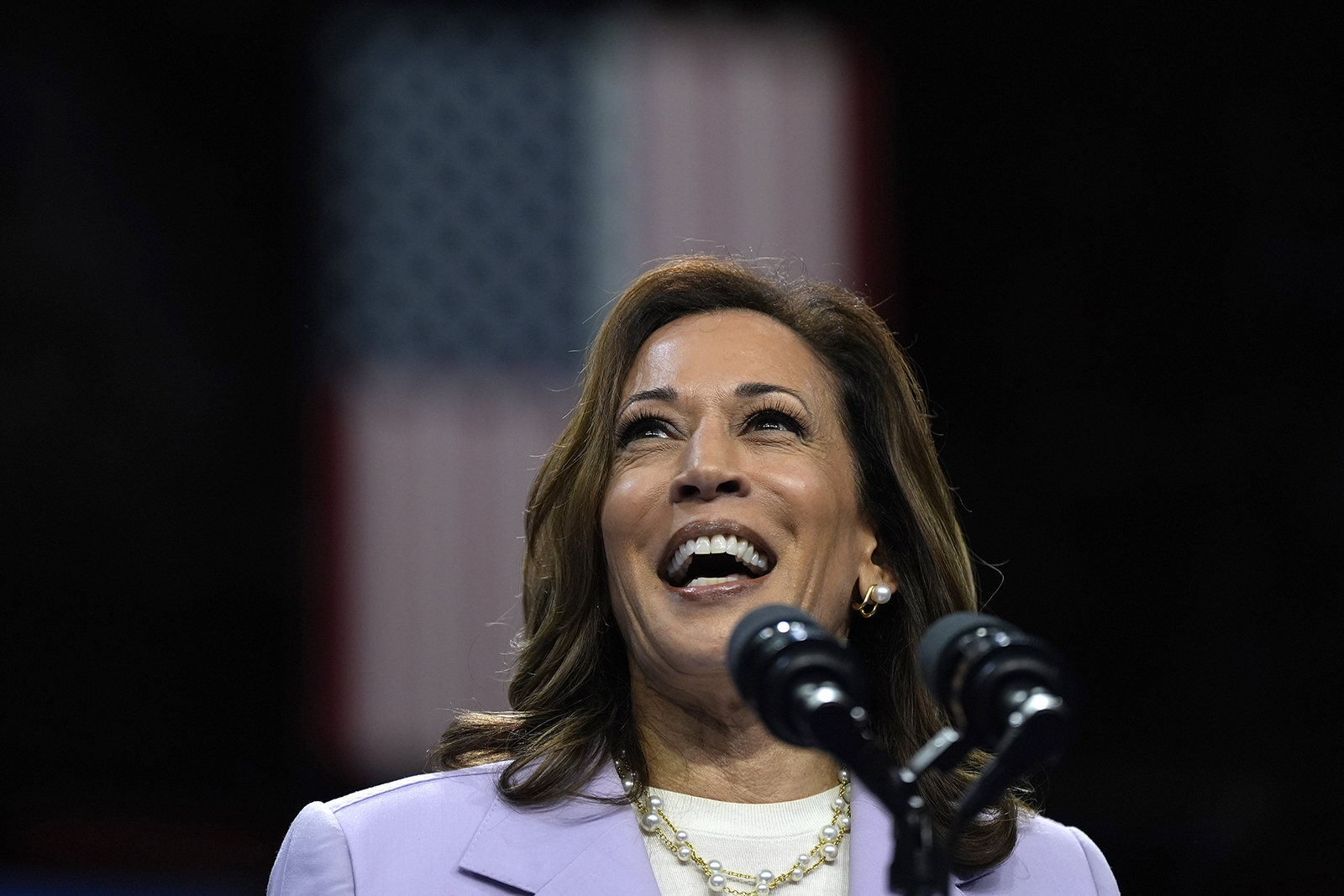
(RNS) — The slogan of Kamala Harris’ presidential campaign, “We’re Not Going Back,” is a triple play.
First and obviously, it’s about not going back to a Donald Trump presidency. Second and clearly enough, it’s about not going back to a time when abortion was banned, women were second-class citizens, LGBT people were in the closet, and racial discrimination was the rule.
But third and more subtly, it’s about rejecting MAGA Republicanism. Its message is the reverse of the MAGA slogan, “Make America Great Again,” which is about going back — restoring something that’s been lost.
That slogan made its appearance when Ronald Reagan ran for the presidency in 1980. What it announced was the Reagan agenda of returning America to an idealized past of conservative social and economic values.
A Reagan-Bush pin from the 1980 presidential campaign. (Courtesy image)
This would be accomplished by a return to the 19th-century ideology of deregulation and union-busting and a jurisprudence of constitutional originalism. Nothing better summed it up than the famous 1984 reelection ad claiming that under Reagan, America had experienced a new beginning — or more precisely, was reexperiencing its beginning: “It’s morning again in America.”
It’s important to recognize that this message had deep religious resonance for white evangelicals, who after voting for co-religionist Jimmy Carter in 1976, turned en masse to Reagan and in due course became the activist base of the Republican Party.
In the early 19th century, the ideal of restoring primitive Christianity took hold in American Protestantism and a number of new religious groups formed with restorationism at the core of their identity. Notable among them were the followers of Thomas and Alexander Campbell, who were so determined to recover the basic tenets and practices of the early church that they insisted on calling themselves just “Christians.” (Today the denomination they founded is known as the Disciples of Christ.) There were also J.R. Graves’ Landmark Baptists, who claimed to be descended through an unbroken succession of congregations practicing adult baptism back to the time of Jesus.
What the antebellum restorationists shared was the conviction that, as its leading historian Richard Hughes puts it, the “first times” were “in some sense normative or jurisdictional for contemporary belief and behavior.” They also shared the view that America itself would play an important role in their respective religious projects.
Alexander Campbell nurtured the hope that the basic Christianity he was promoting would come to serve as the nation’s civil religion, such that the United States would become the foundation of the millennial age. Graves promulgated a form of Christian republicanism that saw America as “the hope of the world” and “pre-eminent among the nations of the earth.”
It’s no accident that Reagan grew up as a Disciple and that Reaganite restorationism became embedded in Republicanism. Indeed, in 2012, restorationist language seemed obligatory for all GOP presidential wannabes.
Newt Gingrich’s campaign biography ended with the sentence: “We ask you to join us in this effort to restore America as a nation like no other.” In 2011, Rick Perry told the Western Conservative Summit in Denver, “Let us restore the nation’s principles.”
Ron Paul’s campaign slogan was “Restore America Now,” and his platform was the “Restore America Plan.” Michele Bachmann’s campaign pin read, “Restoring constitutional conservative values.”
Mitt Romney’s super PAC was named Restore Our Future. Did I mention that Mormonism was also an antebellum restorationist movement?
As for the 2012 Republican Party platform, its first two sections were titled “Restoring the American Dream: Rebuilding the Economy and Creating Jobs” and “We the People: A Restoration of Constitutional Government.” All in all, “restore” and its cognates appeared 21 times in the text of the document.
Trump’s revival of the original Reagan slogan four years later was simply a continuation of this restorationist ideology. The MAGA takeover of the Republican Party is an establishment of restorationism as the GOP faith.

Democratic presidential nominee Vice President Kamala Harris speaks at a campaign rally, Aug. 10, 2024, in Las Vegas. (AP Photo/Julia Nikhinson)
But what of Harris’ reversal of the message? What is its alternative faith?
I’d say it has to do with the meliorist vision — call it futurist — declared in the preamble to the Constitution’s “to form a more perfect Union” and in Lincoln’s resolve in the Gettysburg Address that there be “a new birth of freedom.”
Running for the Democratic presidential nomination in March of 2008, Barack Obama articulated this faith in a speech at the National Constitution Center in Philadelphia, which he titled, “A More Perfect Union.” Noting that the Constitution was “ultimately unfinished” and “stained by this nation’s original sin of slavery,” he pledged:
to continue the long march of those who came before us, a march for a more just, more equal, more free, more caring and more prosperous America. I chose to run for the presidency at this moment in history because I believe deeply that we cannot solve the challenges of our time unless we solve them together — unless we perfect our union by understanding that we may have different stories, but we hold common hopes; that we may not look the same and we may not have come from the same place, but we all want to move in the same direction — towards a better future for our children and our grandchildren.
I expect we’ll hear something along these lines from Harris when she accepts the nomination next week. Along with, “We’re not going back.”

